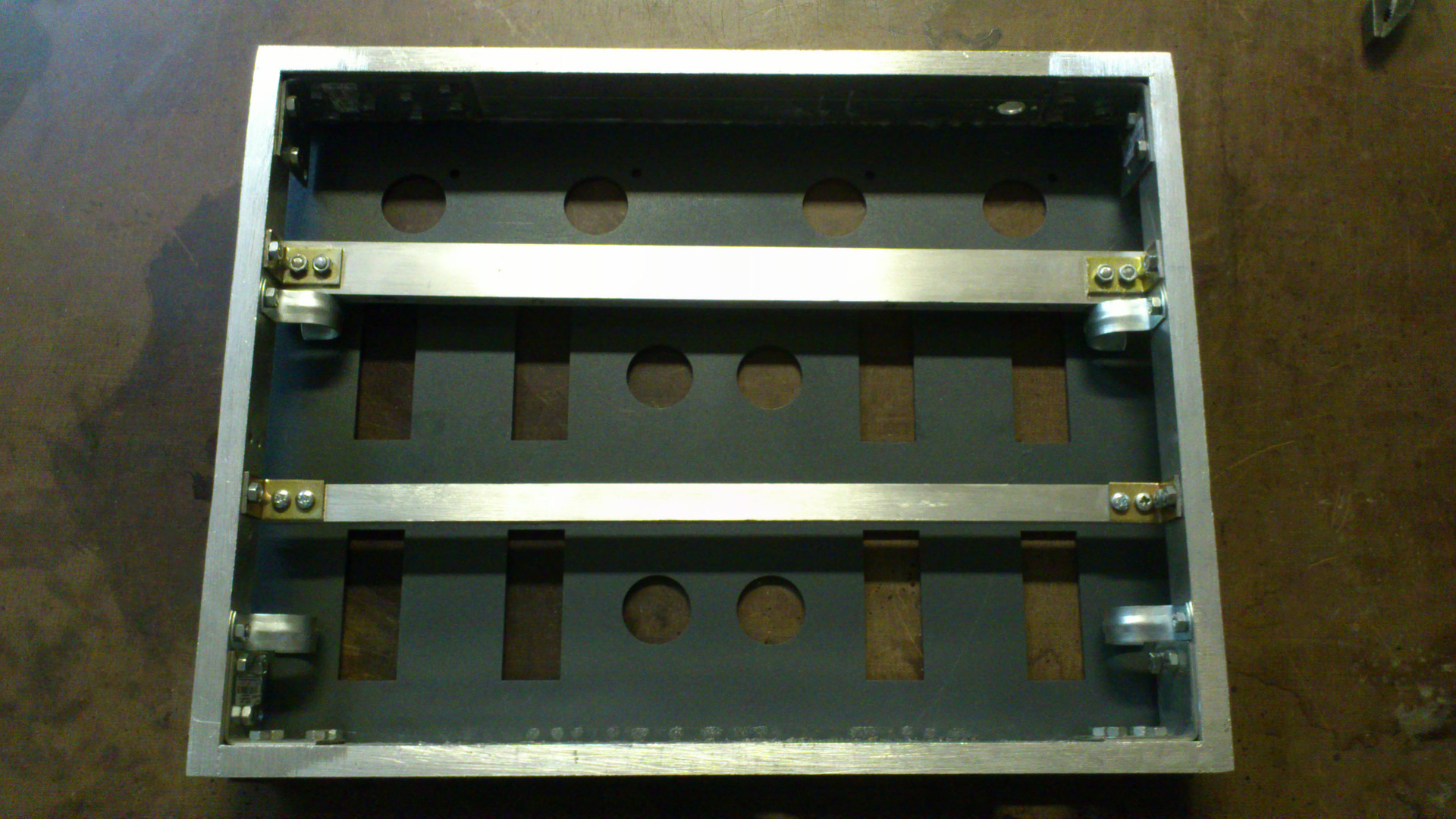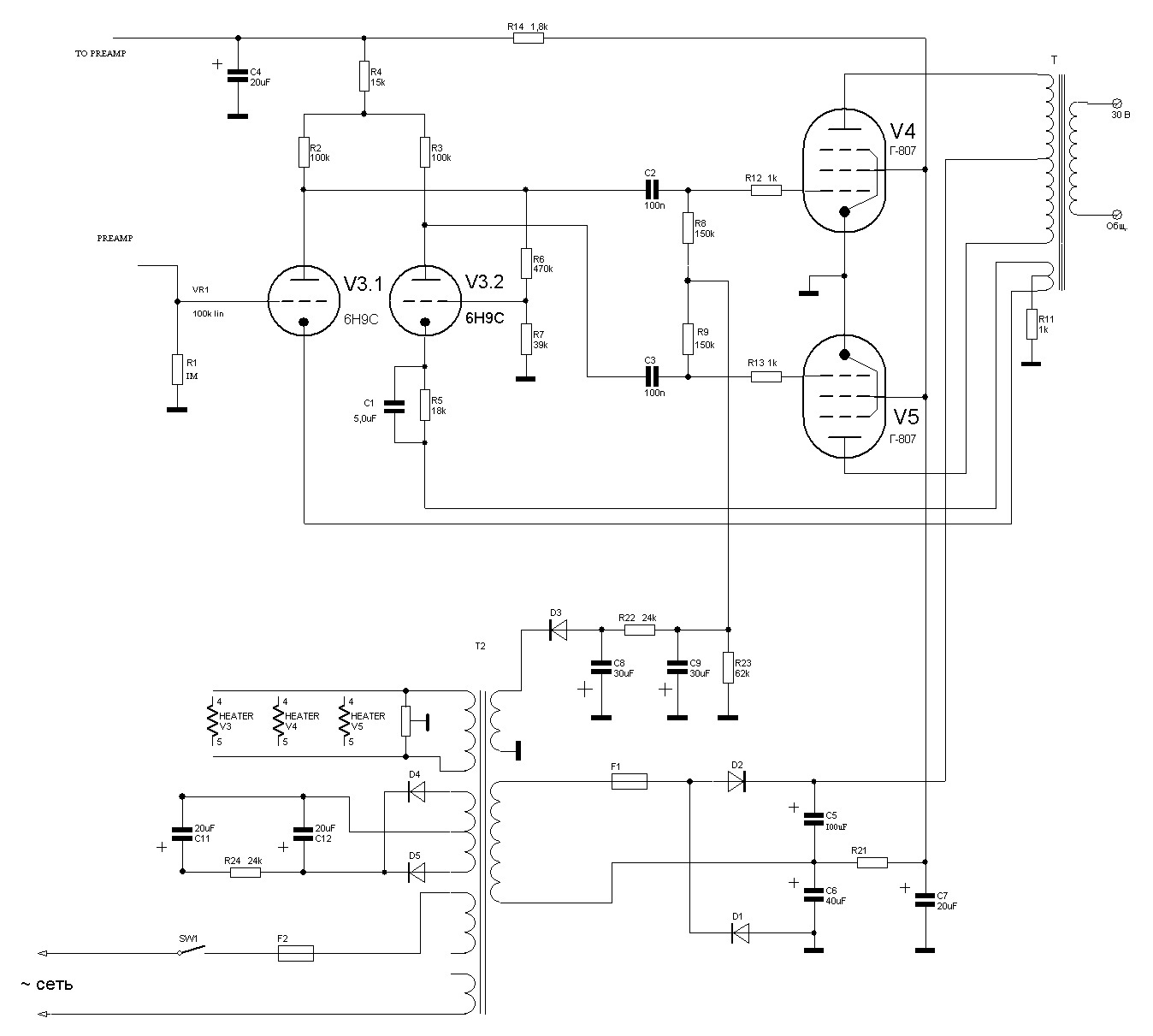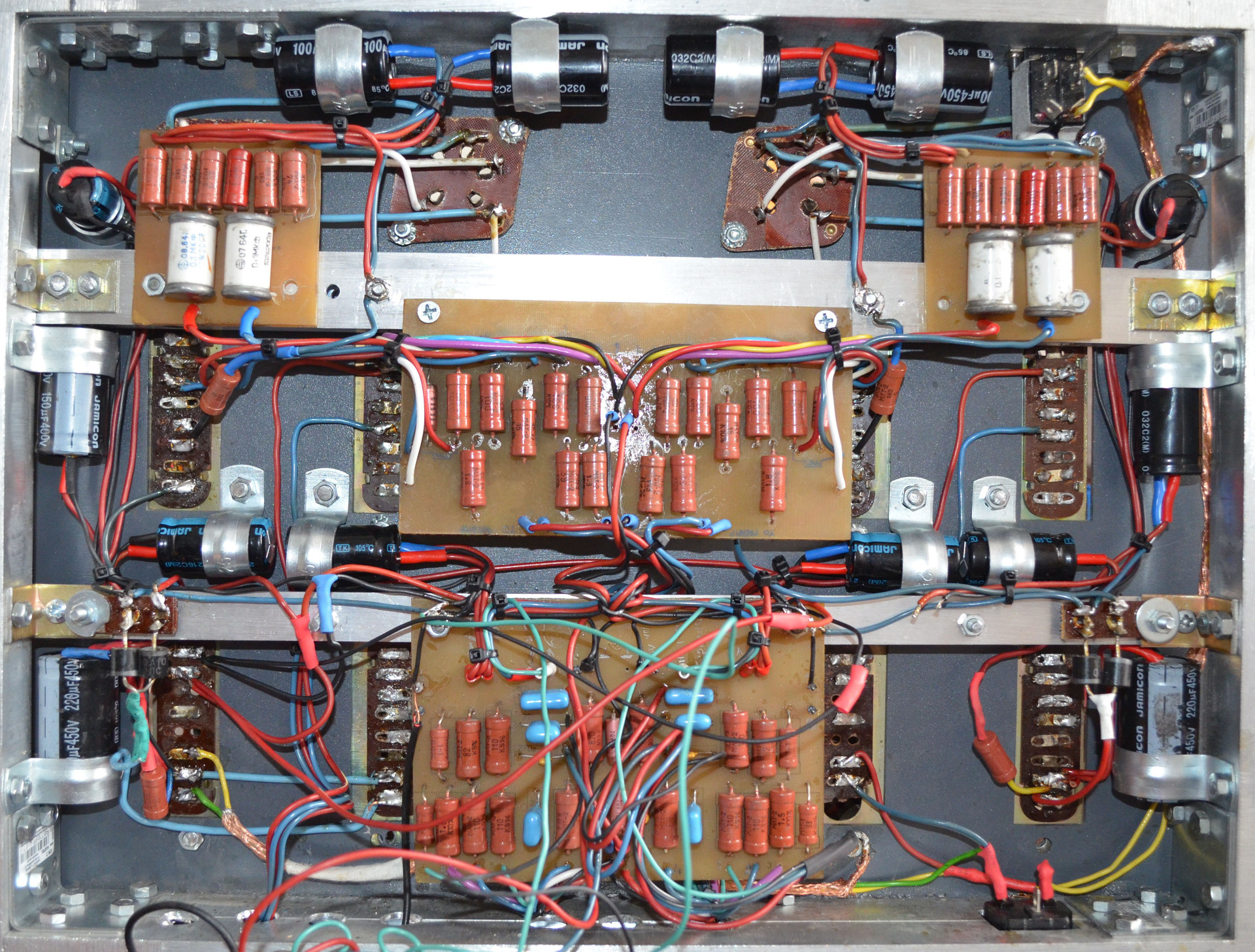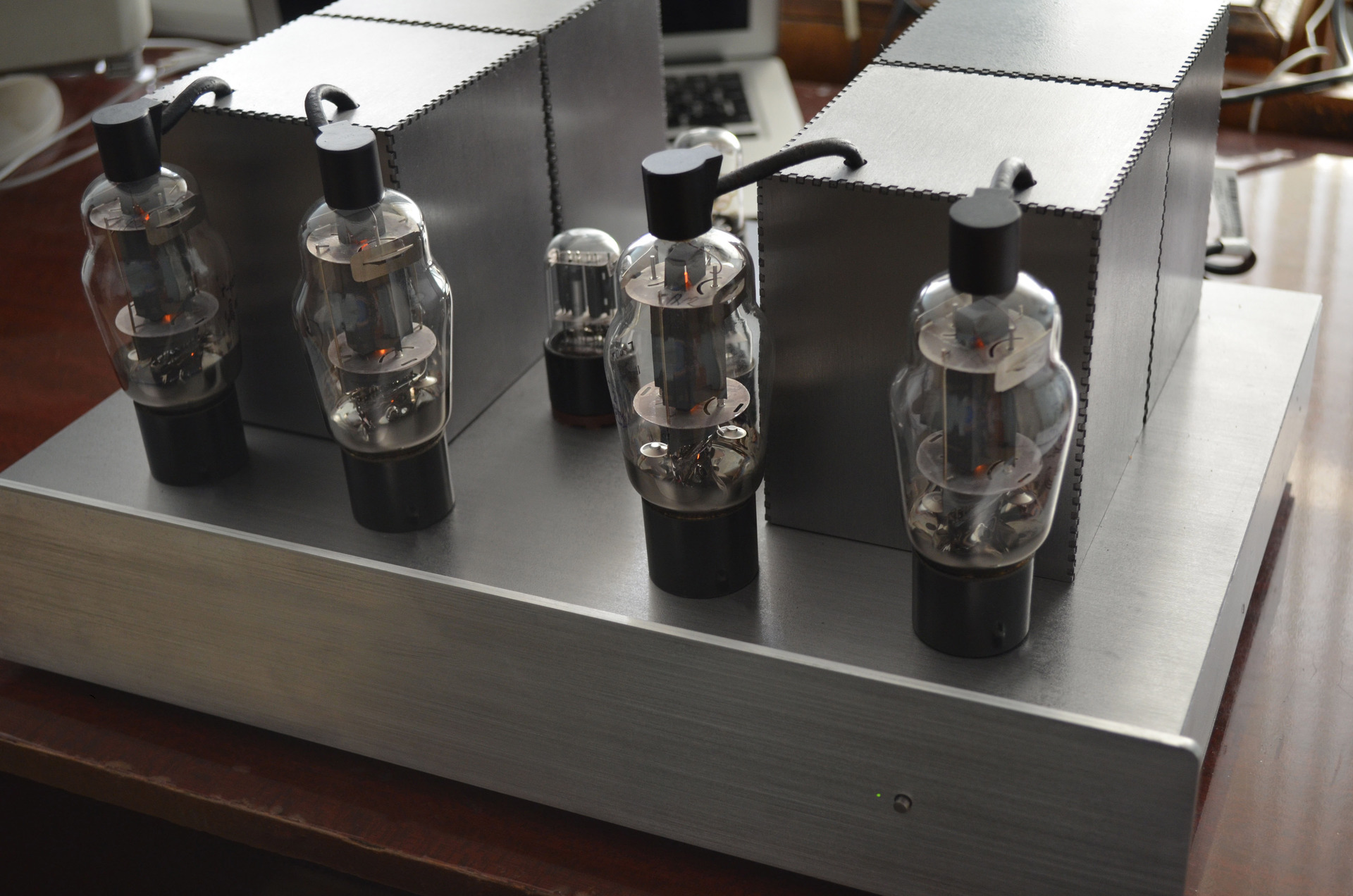Tube amplifier

Briefly, mostly photos (perezalil in good quality). I must say that there was little experience and knowledge in radio engineering, I made many mistakes. Not being a fanatical lover of warm tube sound, the assembly process itself was interesting for me.
The most difficult thing is to find output transformers. I bought myself ready-made from the amplifier TU-100M (for a long time I didn’t choose which ones I took). The frame was made of aluminum and the margin of strength was a bit overdone.

')
The upper part of the body is made of 3mm steel. Holes for transformers and lamps were cut out by laser. The bottom was also cut from 2mm steel with vents:

Aluminum front panel:

Scheme
The final amplifier is assembled in a push-pull pattern on two G-807 lamps. The preamplifier contains two amplification stages, assembled on the 69 double triode (foreign analog 6SL7).
Advantages 69:
1) The lamp was originally designed for sound use;
2) Two triode in the balloon;
3) High linearity;
4) Widespread, low price.
Disadvantages 6N9S:
1) High internal resistance.
The pre-final amplifier (intermediate between single-ended and push-pull amplifiers) is assembled according to a phase-inversion scheme on the 6H9C double triode, the main purpose of which is to form two mutually anti-phase, equal in amplitude signals from the input signal. In the TU-100M scheme, the lamp amplifies the input signal and the voltage amplified by it is applied to the grid of the lamp of the first arm of a push-pull amplifier.
A part of the output voltage of the first lamp of the phase-inverse amplifier is fed to the input of the second lamp of this amplifier. The voltage amplified by the second lamp of the phase-inverting amplifier is fed to the grid of the lamp of the second arm of the push pull.
the amplifier. Thus, for the first arm of a push-pull amplifier, the signal passes through one lamp, and for the second through two.

It would be better if the voltage applied to the input of the first shoulder would be equal to the voltage to the input of the second shoulder. Made a slightly different scheme, with a modified phase inversion cascade.
Trial scheme:

Benefits:
1) Reduced filtration requirements for supply voltage;
2) Extremely low noise level;
3) Equal output voltage of the shoulders.
Found another option on the forums:

Sockets for 6H9C lamps:

In the amplifier housing assembled DAC with the ability to connect to a computer via USB:


Setup option:

Transformer screens, first sketches on paper:

Cut from 2mm steel:
After fitting with a file and grinding:
Some more photos:
Cleaned up a bit:

Price: unnecessarily expensive.
It is easier to buy ready for 4-5 thousand rubles. But if someone needs it, I can drop files for cutting and for printed circuit boards.
Source: https://habr.com/ru/post/251087/
All Articles